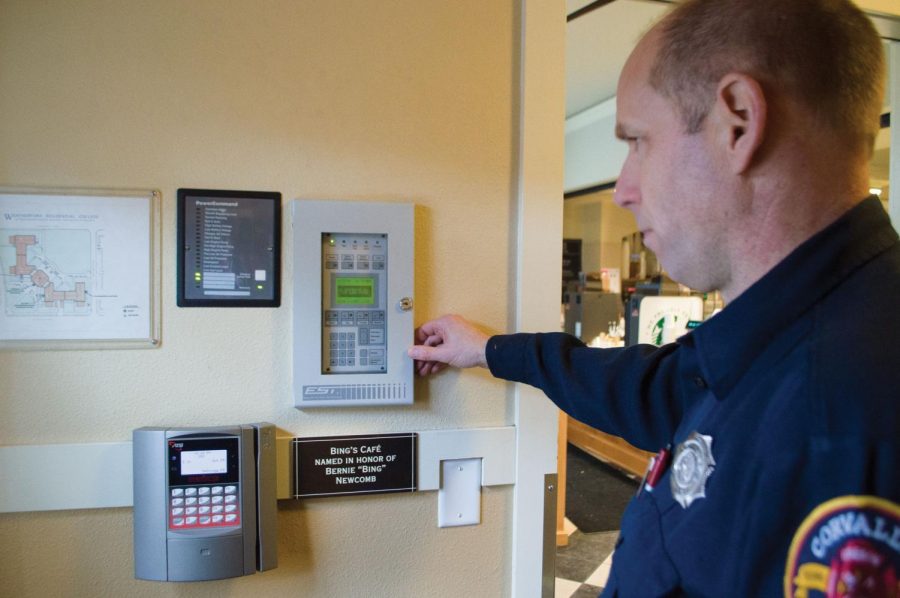False alarms: trial by fire
January 15, 2016
All it takes is one overcooked bag of popcorn to summon fire trucks from three or four local fire stations to campus.
According to an email sent to all on-campus residents from the University Housing and Dining Services, there was an increase in what Fire Prevention Officer Jim Patton referred to as “nuisance fire alarms.” This occurs primarily in the residence halls on campus, causing a headache for students, but also a distraction to the Corvallis Fire Department. Patton said that though they are not on campus for long, and in most cases are easily dealt with, the monetary drain can reach up to $1,000 for an hour of work.
“Out of four fire stations, only three of those house medic units,” Patton said. “And so out of three stations that respond to campus at least two of those will be medic units.”
The third medic unit stays behind, and is left with an increased workload.
“That takes us down to one medic unit to serve the entire Benton County Area,” Patton said.
Patton said the most common culprit for false alarms is burnt food like popcorn, and that those responsible for false alarms can be charged for the fire team’s response, which can end up costing as much as $1,000, even for something like leaving food unattended as it spreads smoke. Some cases can even result in the student being removed from the dorm.
Patton explained that the one remaining medic unit often receives calls for medical assistance out of their range, so the response time is much longer than it normally would be. When there are serious medical calls, that time is going to make a significant impact on how the situation is treated.
An important part of Patton’s work involves meeting with the members of UHDS to go over the policy for on-campus living and fire safety expectations for students living in the dorms. Among those members are Jennifer Viña, the associate director of marketing and communications, and Jill Childress, the assistant director of student conduct and community standards in residential education.
Childress said that UHDS meets with Patton every year to discuss the Policy on fire safety and prevention. Patton said he brings any suggestions to the resident assistants in a conduct training session he holds with them just before the new students arrive, which includes disciplinary strategies.
“It’s absolutely case by case,” Childress said regarding how they deal with disciplinary actions relating to these nuisance alarms.
According to Childress, whenever there is a break in the code of conduct relating to safety, a discussion takes place with students to give them a chance to share their side of the story, and the issue can have a beneficial resolution.
“We look to UHDS and student conduct staff to work with that student to correct that behavior,” Patton said. According to Patton if the behavior goes beyond something accidental like burning popcorn, more severe punishments will be given out.
Both Patton and Viña have suggestions as to how to avoid being the recipient of UHDS attention, and it all starts with the policy.
“Read the policy and information guide,” Viña said, as it has all of the information on conduct and will answer most questions. For example, the guide says that the fire doors in the hall should remain closed at all times as they are capable of keeping smoke from spreading. Patton stresses the importance of fire alarms, and how the tampering with them is one of the absolute worst things a student can do.
“We take these alarms very seriously,” Patton said.
























































































































